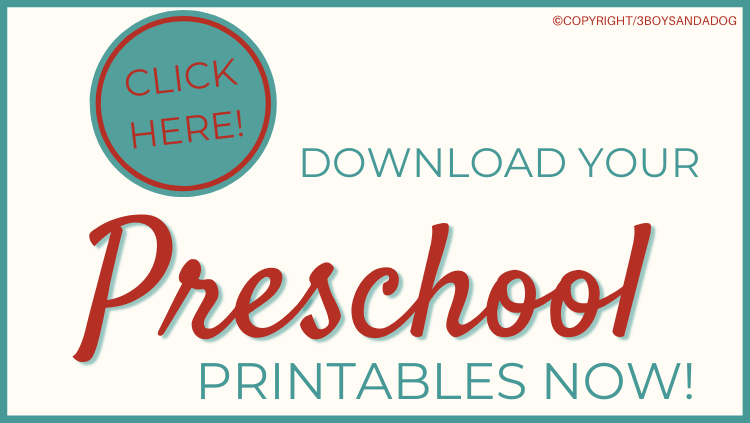Looking for a fun family game night idea? This Ladybug Game Counting Cards set is perfect! Be sure to check out all my Family Fun and Games for even more great ideas!

Ladybug Game Counting Cards
Thank you 3 Boys and a Dog for having me over today! I’m excited to share one of our favorite family games for the last few years: The Ladybug Game!
We fell in love with this game when we received it as a gift. Our children are young, and my preschoolers don’t know how to read, but this game lets them play right along anyway! It was actually created by a 6-year old, and while it does not require any reading, it does require the kiddos to count, interpret symbols, and take turns…all great skills for young children!
It is also the perfect end to a ladybug filled day! The weather is just warming up enough that we are starting to see more ladybugs. The kids love to hold them, talk about their color, count their spots, and look for good ladybug “hiding places.”
Did you know that ladybugs hibernate? They also eat garden pests like aphids, and can secrete a smelly yellowish liquid from their “knees” as a defense mechanism!
When should I start introducing counting?
When introducing counting to children, it is important to begin at an age-appropriate level. Babies, from a young age, can observe adults counting and begin associating items with a verbal number – for example, saying “one, two” as they count items.
As babies grow, parents can offer opportunities for children to engage in activities that allow them to learn the concept of counting, such as identifying objects in different categories and counting the number of items on a paper strip or in one’s hand.
Although there is no definitive time to start teaching children how to count, research suggests that by the time they reach three years old, they have been exposed to enough numbers and verbal language that they understand the idea of picking up a series of small objects one at a time and associating each gathered item with a vocalized number.
Appropriate counting activities reinforce not only mathematical concepts but also develop problem-solving skills, fine motor development, and language abilities.
What methods can I use to teach my child to count?
Teaching children to count is an important part of their early childhood education. There are several methods that parents can use to begin teaching their child to count successfully and ideas that are backed by early learning research.
First, they can use counting games like finger and number matches, which pair the written numeral, the amount it represents, and physical objects together.
This visual representation helps develop their understanding of what the numbers look like and how much of the object corresponds with each number. Additionally, parents should sing songs with numbers in a catchy way that gets children involved with counting and encourages them to learn about numbers.
Exposure to math concepts in a fun way will help them see it as something positive and make it easier for them to recall this knowledge in future situations.
Finally, parents should provide tangible experiences whenever possible; counting out money or measuring ingredients for cooking provides real-life experiences that allow children to apply their knowledge about math operations reinforced during previous lessons.
How do I ensure that he or she retains the information?
Making sure that he or she retains the information comes down to creating an environment where learning is comfortable and encouraged.
Effective instruction should focus on providing guidance and introducing new concepts while allowing the learner time to explore and test these concepts.
How do I foster a sense of enjoyment and engagement in counting for my child?
To foster a sense of enjoyment and engagement in counting for your child, it is important to make the activity both interesting and challenging. This can be accomplished by using everyday items as a part of their learning experience.
For instance, providing children with a visual representation of how many objects they are counting, such as using bingo chips or cheerios, can really help them to keep track of what number they are on.
Additionally, switching up how you ask your child to count or incorporating playful games involving numbers can result in your child feeling more engaged with the activity and can stimulate their brain activity.
Finally, being encouraging and praising small accomplishments throughout the process will remind them that learning the skill of counting is an attainable goal!
What tools should I utilize for teaching counting?
Teaching counting is an important aspect of early educational development. As a teacher and parent, it is important to have the right tools and resources to assist students in learning this basic concept.
A whiteboard or chalkboard and some manipulatives are essential, as they can provide visual aids for students. Additionally, flashcards, number games, and physical counting can help students associate symbols with their written numbers and teach them new concepts, such as skip counting by twos or fives.
It is also a good idea to incorporate digital technology if at all possible; interactive apps and videos are great for introducing more difficult concepts of counting, like base ten blocks or Roman numerals.
Using various tools will ensure lasting comprehension for any student’s practical math skills.
Is it helpful to include objects in the counting process?
Incorporating objects into the counting process can be a useful tool in early mathematics education. It allows children to manipulate tangible items, facilitating the understanding of basic numerical concepts such as quantity and order.
In addition, counting tangible objects presents a visual representation of numbers, allowing children to form concrete connections between them and the more abstract concept of numerals.
Through manipulation, it provides important hands-on practice that enriches learning and builds capabilities to understand numbers.
Research has consistently found that among young children who are just beginning to learn mathematics, those who employed physical manipulatives while counting often performed better than those who did not use them at all.
Therefore, when teaching young learners how to count and work with numbers, incorporating objects is certainly beneficial.
What methods can I use if my child is struggling with counting?
If a parent recognizes that their child is struggling with counting, it can help to encourage them to practice counting differently.
One way to do this would be to start relatively simply with everyday objects, such as counting stuffed animals or vegetables together at mealtime.
Parents could also explore teaching their child the concept of one-to-one correspondence, which involves providing tangible reinforcement when their child selects the correct item for each named number.
Additionally, there are many learning apps and computer games available that focus on improving counting and mathematics skills. These tools can be incredibly valuable in reinforcing and cementing a child’s understanding and knowledge of mathematics.
To help out, I’m sharing this {FREE} Ladybug Count & Clip Card set! It’s perfect for preschoolers and other young children learning numbers. The clipping action also helps strengthen small muscles in their hands to help prepare for writing and cutting!


Ashley
Monday 7th of April 2014
This would be great for a little busy bag too!
Tiffiny
Saturday 5th of April 2014
These look great! I just downloaded them and will pin! Thanks for sharing.
Kelli Miller
Monday 7th of April 2014
YAY! I hope your kids love them - and I am so addicted to pinterest... are you?